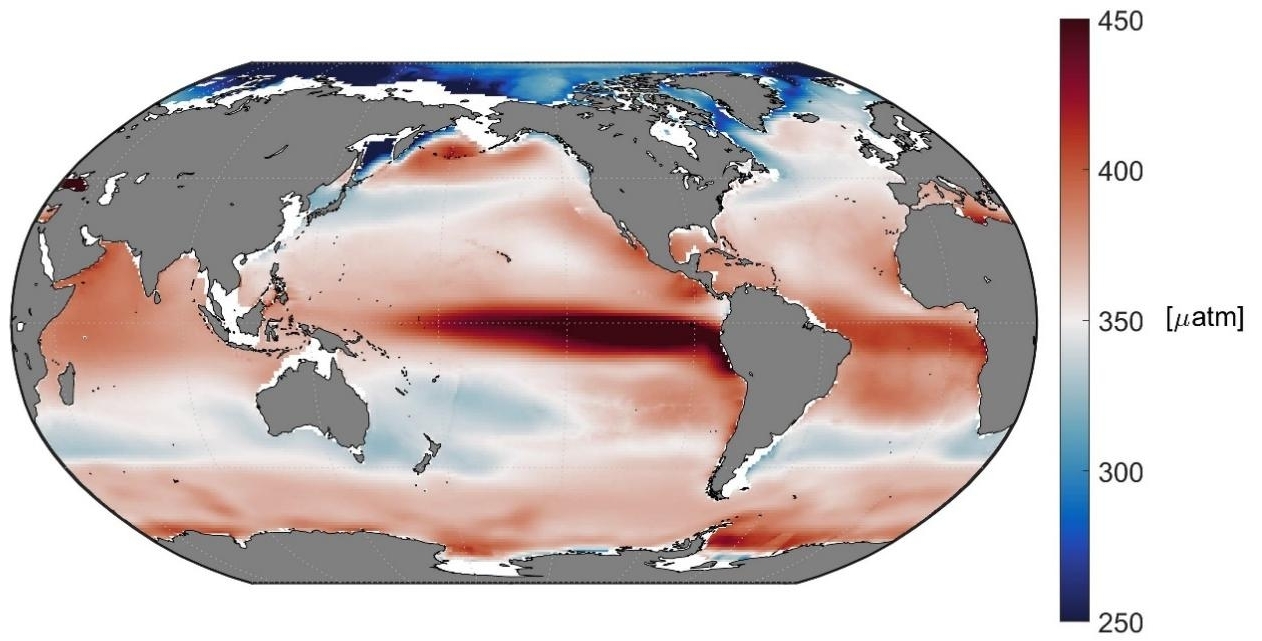As a net sink for atmospheric CO2, global oceans have removed about one-third of anthropogenic CO2 since the beginning of the industrial revolution. However, there is significant uncertainty in the estimation of the global ocean sea-air CO2 flux, which depend on the surface ocean CO2 partial pressure (pCO2) products.
In order to reduce the uncertainty, research based on different methods were carried out to reconstruct pCO2. In previous pCO2 reconstruction, the differences between the drivers of surface ocean pCO2 in different regions were not considered, and no widely recognized methods for judging the importance of each predictor in the surface ocean pCO2 mapping are available yet.
Recently, the research team led by Prof. SONG Jinming from the Institute of Oceanology of the Chinese Academy of Sciences (IOCAS) constructed a stepwise feed-forward neural network (FFNN) algorithm to rank the importance of predictors and figure out the optimal combination of pCO2 predictors in each biogeochemical province defined by self-organizing map (SOM), and reconstructed a monthly global 1° ×1° resolution global surface ocean pCO2 product from January 1992 to August 2019.
The study was published in Biogeosciences.
The validation based on the Surface Ocean CO2 Atlas (SOCAT) dataset and independent observations shows that using regional-specific predictors selected by the stepwise FFNN algorithm retrieved a lower predicting error than globally similar predictors. The mean absolute error (MAE) of the global estimate was 11.32 μatm and the root mean square error (RMSE) was 17.99 μatm.
The mean absolute error of the new pCO2 product is lower than the previous, suggesting that pCO2 predicting based on regional specific predictors selected by the stepwise FFNN algorithm was better than that based on the globally same predictors.
"This work provides a statistical method for predictor selection for all research based on relationship fitting by machine learning methods," said Prof. SONG.
The script file of the stepwise FFNN algorithm and pCO2 product are distributed through the Marine Science Data Center, Chinese Academy of Sciences (open-access, available on https://doi.org/10.12157/iocas.2021.0022).
This work was supported by the National Key Research and Development Program of China, the Major Program of the Pilot National Laboratory for Marine Science and Technology (Qingdao) in the "14th 5-year Plan", the Strategic Priority Research Program of the Chinese Academy of Sciences, the National Natural Science Foundation of China, and the Natural Science Foundation of Shandong Province.

Monthly global 1° ×1° surface ocean pCO2 product based on the stepwise FFNN algorithm
Zhong, G., Li, X., Song, J., Qu, B., Wang, F., Wang, Y., Zhang, B., Sun, X., Zhang, W., Wang, Z., Ma, J., Yuan, H., and Duan, L. Reconstruction of global surface ocean pCO2 using region-specific predictors based on a stepwise FFNN regression algorithm. Biogeosciences, 19, 845-859.
LI Xuegang
Institute of Oceanology
E-mail: lixuegang@qdio.ac.cn
(Editor: ZHANG Yiyi)
|
|

Address: 7 Nanhai Road, Qingdao, Shandong 266071, China
Tel: 86-532-82898902 Fax: 86-532-82898612 E-mail: iocas@qdio.ac.cn


